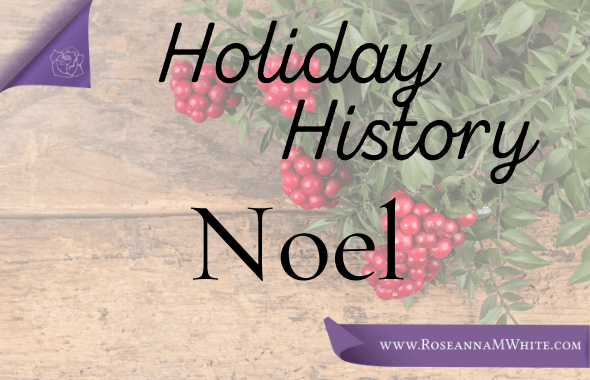
Holiday History ~ Christmas Wreaths

Did you know that Christmas wreaths have their origins in Christmas trees? I’d never really paused to wonder where they came from, but upon reading that, it made total sense.
In Europe, where the pine forests inspired the tradition of bringing something green and eternal into the home to celebrate the bringer of eternal life, the wreath soon took shape too. It happened quite naturally–people had to trim and shape the trees they brought inside for Christmas, which meant boughs left over. Well, these people weren’t wasteful–they decorated with the limbs too.
And the idea of weaving them into a circle was apparently a natural one–another symbol of eternity, after all! I found it fascinating to learn that those first Christmas wreaths were not hung on the door or set on the table to hold candles, but were in fact hung upon the tree! Yep, that’s right. The first wreaths were ornaments.
It’s also important to note that throughout history, wreaths were a symbol of victory–just think of Greeks of old wearing a laurel or olive-leaf crown when they won a game. This is an idea that never went away, so creating one from evergreens at Christmas time was just another element to the symbolism of all Christ represents for us.
The idea of an advent wreath in particular is credited to Johann Hinrich Wichern, a Lutheran pastor.
Like many other Christmas traditions that we now consider standard, wreaths began to be adopted by the general populace all throughout Europe and America during the 19th century.










 Roseanna M. White is a bestselling, Christy Award winning author who has long claimed that words are the air she breathes. When not writing fiction, she’s homeschooling her two kids, editing, designing book covers, and pretending her house will clean itself. Roseanna is the author of a slew of historical novels that span several continents and thousands of years. Spies and war and mayhem always seem to find their way into her books…to offset her real life, which is blessedly ordinary.
Roseanna M. White is a bestselling, Christy Award winning author who has long claimed that words are the air she breathes. When not writing fiction, she’s homeschooling her two kids, editing, designing book covers, and pretending her house will clean itself. Roseanna is the author of a slew of historical novels that span several continents and thousands of years. Spies and war and mayhem always seem to find their way into her books…to offset her real life, which is blessedly ordinary.